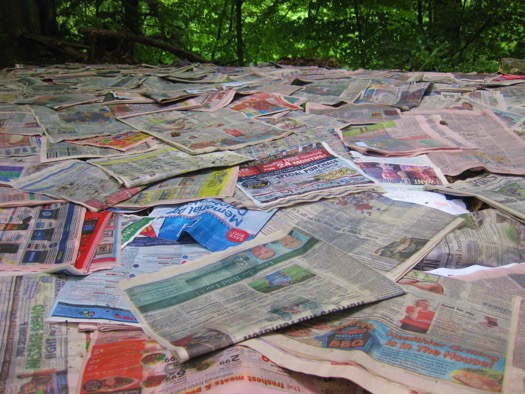Quick Summary of the Practical Benefits of Mulch
Mulch is often thought of as an optional or decorative accessory for garden and landscape projects. However, this material is a lot more functional and beneficial than many people think. Let’s look at a few examples of how much can be worth its weight in gold as you become more self-sufficient and increasingly rely on growing your own crops.
Why Mulch?
In many cases, plants that are growing in gardens with mulch will grow faster and produce more. This is not always the case, but the odds are definitely in their favor. One of the reasons is that mulch provides a natural form of heat and moisture regulation. For example, soil that is under a bed of mulch can retain up to 90% of its moisture. Soil that is exposed to the sun can lose up to 80% of water through evaporation. So, if you’re in an area where summer rains are intermittent, and you want to conserve as much water as possible, mulch may be one of the easiest and most-effective solutions to consider.
Mulch also helps to regulate soil temperatures, and it provides thermal protection against the impact of temperature fluctuations throughout the day. This places less stress on plants and allows them to focus on growing and taking up nutrients than trying to defend themselves against the environment. Furthermore, maintaining balanced soil temperatures make microorganisms, worms and good insects more active in their role of aerating and infusing the soil with nutrients. Covering soil with mulch can keep temperatures up to 30 degrees cooler when compared with exposed gardens.
Different Types of Mulch
Mulch is commonly associated with wood chips. However, you can make mulch out of anything from newspaper to pine needles or grass clippings. Here are a few examples of some of your options as well as when they may be the most ideal choice for your garden:
Leaves

Leaves are perfect, especially if you have a mixture of fresh as well as drying or dried leaves. Mow them over in order to chop them into smaller pieces and then sprinkle evenly around the surface of your garden. You don’t need to tightly-pack them, but make sure that coverage is even and consistent. Make sure that you position some of the material up against the base of the plants as well. Remember that you don’t want to make a thick blanket. You want gaps through out so that moisture can seep into the soil and steam and heat can exit. This applies to all forms of mulch that you use, so make sure to do some trial and error. This will help you to determine the right amount of coverage for your garden along with the needs of specific crops that you are growing.
Newspaper
Unfold newspaper sheets and spread them evenly across the garden, poking holes for the plants to grow through. If you have an established garden, layer pieces of paper around the plants in order to cover as much soil as possible. Spread one layer over the garden and weigh down corners and edges with a little soil to hold everything in place. Spray a nice, even coat of water across the paper. This will activate their ability to slow evaporation and help the garden to retain moisture. Newspaper is ideal in arid locations or areas that have intense sun exposure.
Clippings
You can use grass clippings, in a thin, but even layer, to trap moisture and also add nutrients to the soil. They also quickly dry out and degrade, which means that you can keep adding new layers as time progresses. Just make sure that you don’t overdo it, and remember that moderation is key when sprinkling the material across the garden.
Pine Needles

Next to wood chips, pine needles are some of the best material to use for mulch. First, they degrade easily, they are easy to distribute and they are light. They also introduce nutrients into the soil while offering great thermal benefits to the soil. Pine needles are also very abundant, and you won’t have to go far to find a substantial amount if you’re anywhere where coniferous trees grow.
Wood Chips
Wood chips are readily available, and you can also shred your own if you have the right equipment. They degrade slowly, which means that you don’t need to actively-maintain the garden as much. They also help to keep soil moist and cool.
Compost

You can also use thin layers of compost as mulch, but make sure that you have plenty of dried garden debris to mix in with the denser food waste. This will help to aerate the compost and allow for the exchange of air throughout your garden. This is a great way to not only regulate temperatures and moisture, but you can till the mulch into the soil from time to time to give it a much-needed nutrient boost as well.
Learn more about how using the right kind of mulch for your garden and growing conditions can make a huge impact on how much food you can produce. You will also conserve water more effectively and often reduce the amount of watering that you have to do as well. Now is the perfect time to try it for yourself, and see if providing this added layer of protection can lead to a better harvest in the fall.



